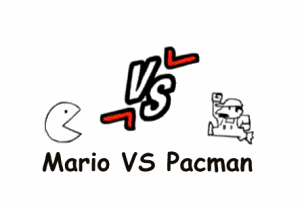"Not the best of analogies, but this will teach everyone to be cautious when they see either side throwing around their Megahertz, dot products and GFLOPS. I’m not saying the numbers are 100% meaningless as there are numbers that are actually trustworthy, but its getting you all ready for what I’m about to tell you
#
GFLOPS is something that gets thrown around a lot, but it should be clear that the peak theoretical GFLOP numbers for both these CPUs are:
# 115GFLOPS Theoretical Peak Performance for 360 CPU
# 218GFLOPS Theoretical Peak Performance for PS3 CPU.
These CPU theories will not be achieved in real world performance. What IBM did when testing for theoretical peaks on both CPUs can't really be considered as representative of how the processors would actually perform in real world situations, because of the type of testing done is too controlled. It’s a much too perfect of an environment and game development is going to involve an unforgiving environment that doesn’t cater so well to the perfect environment the CPUs were tested under.
The GFLOP numbers for the PS3 were calculated based on 8 running SPE, so the fact that the PS3 uses only 6 SPE for game applications lowers the peak theoretical even further, as majority of the floating point work on the PS3’s CPU is done via the SPE. Each SPE has a peak theoretical of 25.6GFLOPS. So the total peak theoretical performance for all 6 SPE would be 153.6GFLOPS, but why is that number also not achievable?
In IBM’s controlled testing environment, their optimized code on 8 SPE only yielded a performance number of 155.5GFLOPS. If it took 8 SPE to achieve that, no way 6 will be able to and that testing was done in a fashion that didn’t model all the complexities of DMA and the memory system. Using a 1Kx1K matrix and 8 SPE they were able to achieve 73.4GFLOPS, but the PS3 uses 6 SPE for games and these tests were done in controlled environments. So going on this information, even 73.4GFLOPS is seemingly out of reach, showing us that Sony didn’t necessarily lie about the cell’s performance as they made clear the 218GFLOPS was “theoretical.†But just like Microsoft they definitely wanted you to misinterpret these numbers into believing they were achievable.
Even while taking all of this into consideration, the CPUs can’t reach those crazy performance numbers; the PS3’s cell still comfortably comes out on top in terms of overall floating point capability, but it should be known that the available power on the PS3’s cell will be significantly more difficult to harness than the available power on the 360’s CPU.
It’s also worth mentioning that even the PS2 CPU had more than twice the GFLOPS of the original Xbox’s CPU, but it didn’t necessarily lead it to being the performance winner. This time around, while the cell has the GFLOPS advantage, its advantage isn’t quite as big as the PS2 CPU had on the Xbox. This teaches us that there is more than one meter of real world performance."
Existing User Log In
New User Registration
Register for a free account to gain full access to the VGChartz Network and join our thriving community.

















